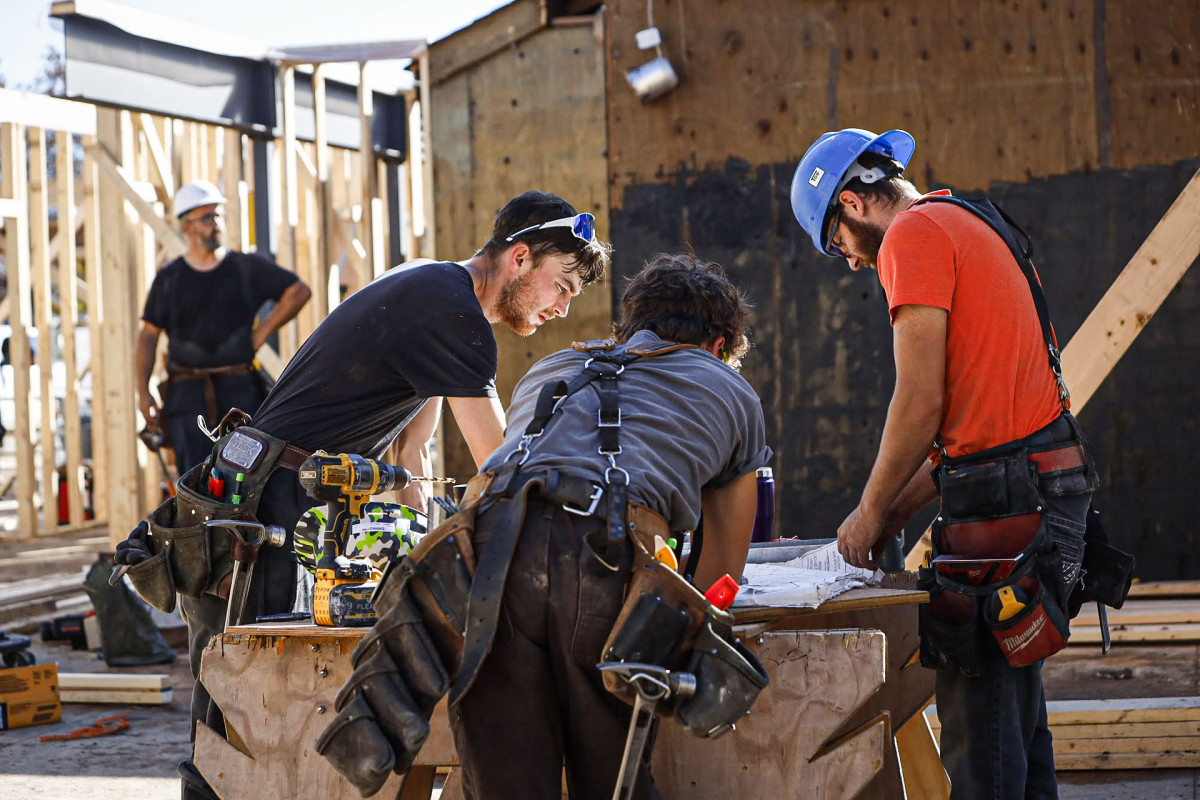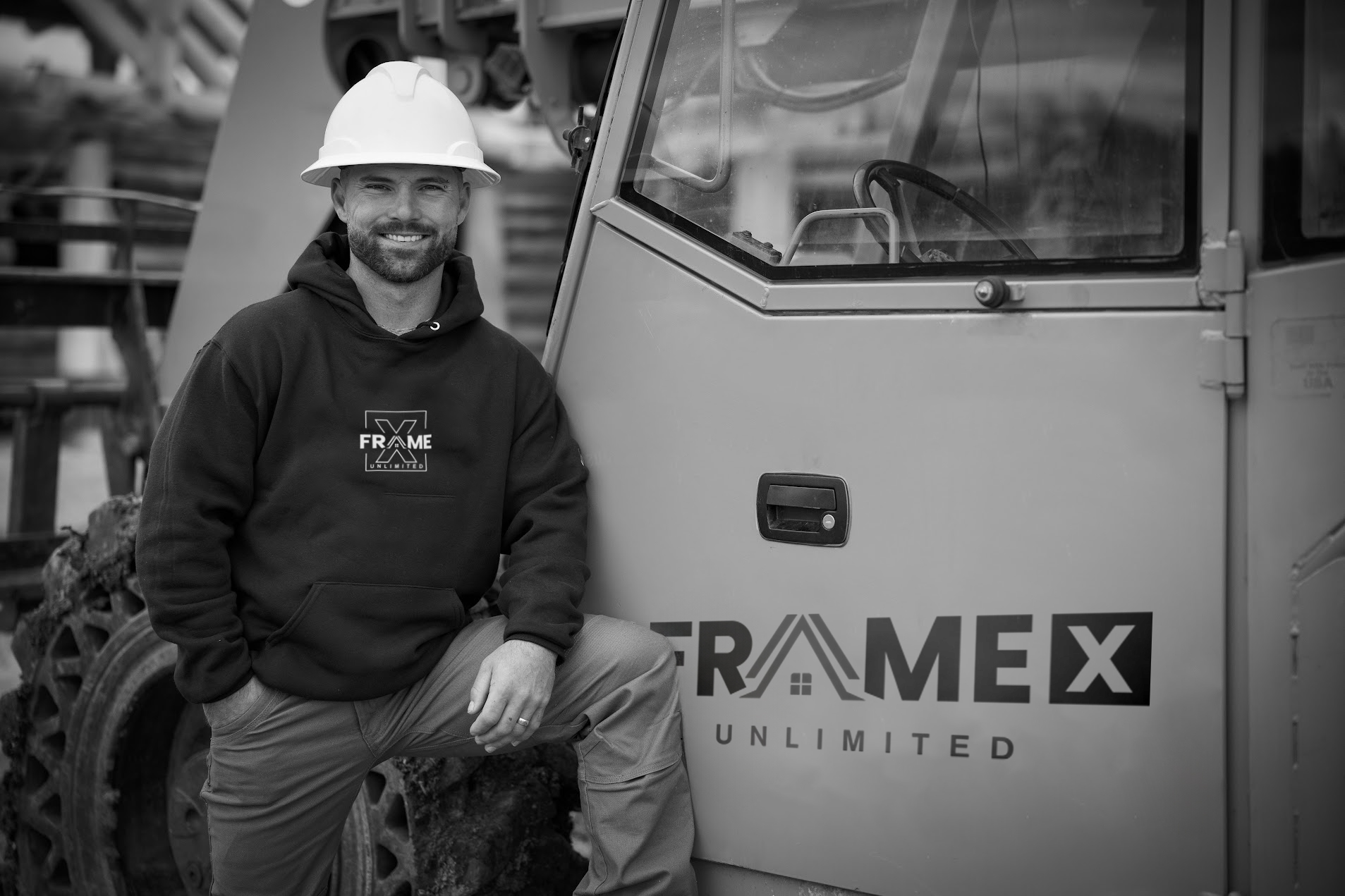In framing construction, the difference between success and delay often comes down to millimeters—and mindset. After more than two decades in the industry, we’ve learned that most project delays aren’t random or unavoidable.

In framing construction, the difference between success and delay often comes down to millimeters—and mindset. After more than two decades in the industry, we’ve learned that most project delays aren’t random or unavoidable. They stem from specific, identifiable gaps in planning, precision, and communication.
The construction industry constantly grapples with timeline slippage. Projects fall behind, budgets expand, and client relationships strain. While many contractors accept delays as inevitable, we’ve built our reputation on consistently eliminating them through systematic approaches to framing that create downstream efficiency throughout the entire building process.
Most framing delays begin before the first nail is driven. Traditional approaches rely too heavily on third-party information and assumptions. We take a fundamentally different approach.
Rather than waiting for builders or clients to notify us when previous trades finish, we contact those trades directly. This simple shift eliminates days of potential delay on typical projects.
Material delivery represents another critical vulnerability. Many framers assume lumber packages will arrive on schedule, only to discover last-minute shortages or delays. We order materials days ahead of scheduled start dates. The morning of delivery, we personally confirm with suppliers before dispatching crews, preventing wasted trips and lost productivity.
Weather and seasonal factors significantly impact construction timelines, yet many contractors apply the same scheduling approach year-round. We adjust timelines based on season, project complexity, and current market conditions. This realistic planning establishes attainable schedules that we consistently meet.
For the inevitable unforeseen circumstances, we maintain contingency plans. Our crews always have backup projects ready, ensuring productive work continues regardless of unexpected delays at primary sites.
Strategic equipment investments often yield greater efficiency improvements than rushing workmanship. Our investment in telehandlers accelerated production by approximately 30%, creating safer work environments while reducing physical strain on crews. This allows sustained productivity throughout the day rather than declining output as fatigue sets in.
Many framing delays occur when specialized fasteners or tools aren’t immediately available. We equip every crew with redundant vehicles or trailers containing comprehensive tool inventories. From power tools to specialty anchors, everything needed for diverse projects—from renovations to custom homes to commercial structures—remains at hand, eliminating mid-day supply runs.
Communication technology proves equally crucial. Immediate access to phones and email allows real-time problem solving between office and field. Learning to effectively multitask between physical work and communication prevents the common evening catch-up that delays decisions until the following workday.
Communication failures cause countless construction delays. Our systematic approach to information sharing creates accountability while preventing misunderstandings.
We’ve implemented tiered communication channels. Company-wide chat groups handle daily tasks, reminders, and schedule adjustments. Project-specific communications ensure everyone accesses relevant information without overwhelming noise.
Daily jobsite documentation forms the backbone of our accountability system. Each crew member, not just leaders, submits photos and descriptions of completed work. This distributed responsibility creates multiple checkpoints, catches potential issues early, and documents additional work beyond initial estimates.
This visual record serves multiple purposes:
When timeline adjustments become necessary, this documentation supports fact-based discussions rather than disputed recollections.
Time tracking through specialized construction software helps measure productivity and profitability while ensuring appropriate resource allocation. This data-driven approach highlights inefficiencies before they develop into delays.
We establish uncommonly high precision standards—working to 1/16″ accuracy and occasionally challenging crews to achieve 1/32″ precision. While perfect precision isn’t always physically possible with dimensional lumber and manufacturer-supplied components, this exacting mindset creates a culture where quality control becomes everyone’s responsibility.
Construction requires constant judgment calls balancing perfection against practicality. With proper guidance, even newer team members learn this critical discernment. We empower every individual to double-check their work and others’ throughout the framing process, preventing compounded errors that typically cause expensive rework.
Our quality control systems include specific protocols:
When marking window openings, we verify measurements from both sides of the wall, confirming true center rather than relying on single-side dimensions.
For wall layouts, we snap chalk lines working from one end but always measure back in the opposite direction to confirm parallel alignment. This extra step often prevents significant repairs later.
Truss layouts incorporate checking dimensions from both ends of the building. When slight discrepancies occur, we identify and resolve them before installation rather than discovering problems during roofing.
We acknowledge that concrete foundations rarely achieve perfect level. Rather than building square walls that will stand crooked, we use lasers and levels to check surfaces before framing, then employ strategic approaches like shimming floor joists or adjusting sheathing installation to accommodate foundation realities.
The most significant advantage comes from understanding what subsequent trades need. Many framers focus narrowly on structural requirements and building codes without considering how their work affects drywallers, roofers, finish carpenters and other following trades.
This holistic understanding develops through experience and intentional feedback. We’ve historically asked subsequent trades about our work quality, using their candid feedback to refine our approach. This commitment to continuous improvement means we virtually never receive callback requests for deficiencies.
Mental visualization before physical construction allows us to anticipate challenges. Before beginning projects, we thoroughly study drawings to identify potential issues and efficiencies based on factors like equipment availability, crew composition, and environmental conditions.
This preparation almost always reveals structural errors or conflicting measurements in plans. Rather than simply flagging problems, we communicate them with proposed solutions. This solution-oriented approach accelerates decision-making and prevents the delay spiral that occurs when issues remain unresolved.
When clarification becomes necessary, we work directly with engineers rather than filtering questions through general contractors or clients. This direct communication eliminates information loss while fast-tracking critical decisions.
Our approach produces clear business outcomes. Year after year, profitability increases while callbacks remain virtually nonexistent. This consistent improvement reflects growing team knowledge, efficiency, and proactive problem-solving.
While our preparation processes require additional planning time and occasional evening work, they prevent the morale-damaging rework that occurs when crews must dismantle and rebuild structures. This focus on getting it right the first time creates positive momentum that carries through projects.
As framing execution improves, project management capacity increases. Successfully running multiple simultaneous projects becomes possible when individual sites operate smoothly without constant intervention.
Detailed initial estimates establish clear work scopes, preventing end-of-project misunderstandings about responsibilities and costs. Daily photo documentation keeps clients informed about progress without requiring constant site visits.
We immediately report necessary schedule changes, never masking delays until they become unavoidable. When mistakes occur, we acknowledge them directly, fix them promptly, and learn from them—building trust through accountability rather than excuses.
For discrepancies within our experience range, we often implement field solutions without involving designers, saving time while maintaining design integrity. For issues requiring clarification, we compile comprehensive lists rather than sending piecemeal requests, respecting designers’ time while ensuring thorough resolution.
We’ve found that phone calls generally resolve urgent matters faster than text messages. Voice communication conveys appropriate urgency and allows immediate clarification, preventing the delays and misunderstandings that written messages sometimes create.
While we continue refining our formal quality control documentation, our current approach incorporates ongoing inspections throughout construction rather than relying solely on final reviews. By addressing quality consistently during the build, we prevent cumulative errors that become difficult to fix later.
We strategically schedule comprehensive quality checks during slower-paced activities like site cleaning, when attention naturally focuses more on details than production speed.
Our approach to “back framing”—the finishing details that complete rough framing—differs from many competitors. Rather than leaving these elements until the end as a separate phase, we complete them progressively throughout construction. This integrated approach ensures nothing gets overlooked in the rush to finish.
Delays in framing create cascading problems throughout construction projects. When framing falls behind, every subsequent trade faces compressed schedules or postponements. This pressure often forces compromises in quality or additional costs for expedited work.
Our systematic approach to eliminating delays provides value beyond simply meeting schedules. It creates predictability for clients, maintains quality standards under realistic timelines, and allows subsequent trades to work efficiently without rushing.
The ultimate measure of this approach appears in long-term results: consistently profitable operations, growing through referrals rather than marketing, and virtually no callback requests for deficiencies. When framing proceeds with precision and purpose, the entire construction process benefits from the solid foundation—both literally and figuratively.
Through deliberate planning, proper equipment, clear communication, exacting standards, and solution-oriented problem-solving, we’ve created a framing process that consistently eliminates the delays that plague typical construction projects. The result isn’t just on-time completion—it’s better buildings, stronger client relationships, and a more sustainable construction business.
We understand that every detail matters. Our commitment to precision ensures that your structure is built to the highest standards, meeting all specifications and exceeding expectations.
With years of hands-on experience in residential, commercial, and renovation framing, our team has the knowledge and skill to tackle any challenge. Our expertise is your assurance of a smooth, quality-driven project from start to finish.
Integrity means more than just doing good work; it means doing what’s right for our clients, maintaining transparency, and staying true to our values. Our clients know they can rely on us for honest communication and a job done right.
We understand the importance of keeping your project on schedule and within budget. Our well-coordinated processes, proactive communication, and efficient team ensure that we deliver on time, every time, without unexpected costs.
We don’t just build; we build relationships. Our dedication to open communication and customer satisfaction ensures that your vision is not only met but also enhanced by our craftsmanship.
We use only top-quality materials in every project, providing a structure that is not only durable but also built to last. When you work with FrameX, you’re choosing strength and sustainability.
